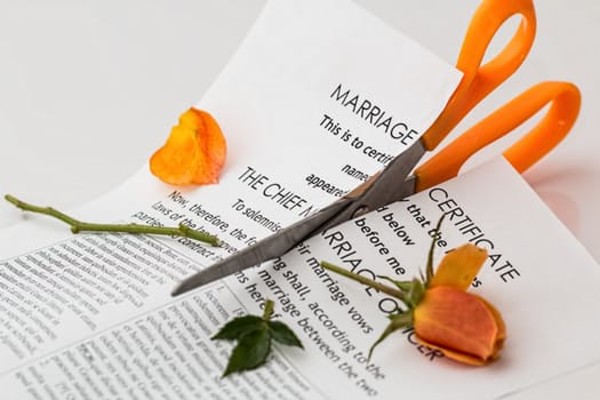

Divorced women are missing out on £5bn in pension payments every single year, according to research from Scottish Widows.
A survey, which polled more than 10,000 individuals, suggested seven in 10 couples don’t consider pensions during divorce proceedings.
According to the research, more than half of married people would fight for a fair share of any jointly owned property, and 36 per cent would want to split their combined savings.
However, fewer than one in 10 claim they want a fair share of pensions, despite the average married couple’s retirement pot totalling £132,000.
The annual deficit of £5bn is calculated by taking the average amount of money in pensions owned by married couples (£71,286 in own pension + £60,342 in partner’s pension), multiplying by 71 per cent of the divorces in a year (107,071 in 2016) where couples don't bring pensions into settlement negotiations, and dividing by two for an equal 50-50 split between the two parties, the provider said.
Catherine Stewart, retirement expert at Scottish Widows, argued that “generally speaking, women’s retirement prospects are worse than men’s”.
She said: “The persistent gender pay gap, maternity leave and career breaks can all hold back women’s earning potential and this often impacts pension savings.
“Relationship breakdowns can leave people really vulnerable but, quite simply, they’re also throwing significant sums of money down the drain.”
Overall, women are less well prepared for retirement than men, with 52 per cent saving adequately for the future, compared with 59 per cent, respectively, the survey showed.
This figure falls to below half for divorced women, with nearly a quarter saying they are unable to save anything at all into a pension, twice the rate of divorced men saving nothing.
Even if pensions are discussed during a divorce settlement, women are still missing out – 16 per cent lost access to any pension pot when they split with their partner and 10 per cent were left relying completely on the state pension, Scottish Widows said.
Ms Stewart said: “It is important that everyone – whether single, married or divorced – take steps to understand their finances and prepare for their independent future should a relationship break down.
“We would urge men and women to better understand the legalities around what happens to pension pots during divorce proceedings, as often they are the second largest, if not the largest asset a couple owns.”
According to Scottish Widows, pensions can be dealt with in a number of ways on divorce.
For example, one person can keep their pension, but the other gets more of the other assets (called “offsetting”).
The court can make a pension sharing order giving a percentage of one person’s pension to the other, or a combination of the two may be needed.
Pension sharing orders are made in just 11 per cent of divorces, the provider said.
Despite the low figure, lawyers have seen a 43 per cent increase in the last year in these court orders, law firm Collyer Bristow said.
According to Nigel Shepherd, head of family law at national firm Mills & Reeve, pension sharing was “introduced almost two decades ago, but it is clear that all too often in a divorce pensions are still not being taken into account properly or at all”.
He said: “The problem has been made very much worse by the fact that so few people are now entitled to legal aid and are having to negotiate the minefield of financial issues on divorce without even basic legal advice. This is storing up real problems down the line, in particular for women.
“While some pensions are relatively straightforward, others (for example public sector schemes) are complex. There is no substitute for expert legal and financial advice and the costs involved should be considered an investment.”
maria.espadinha@ft.com



